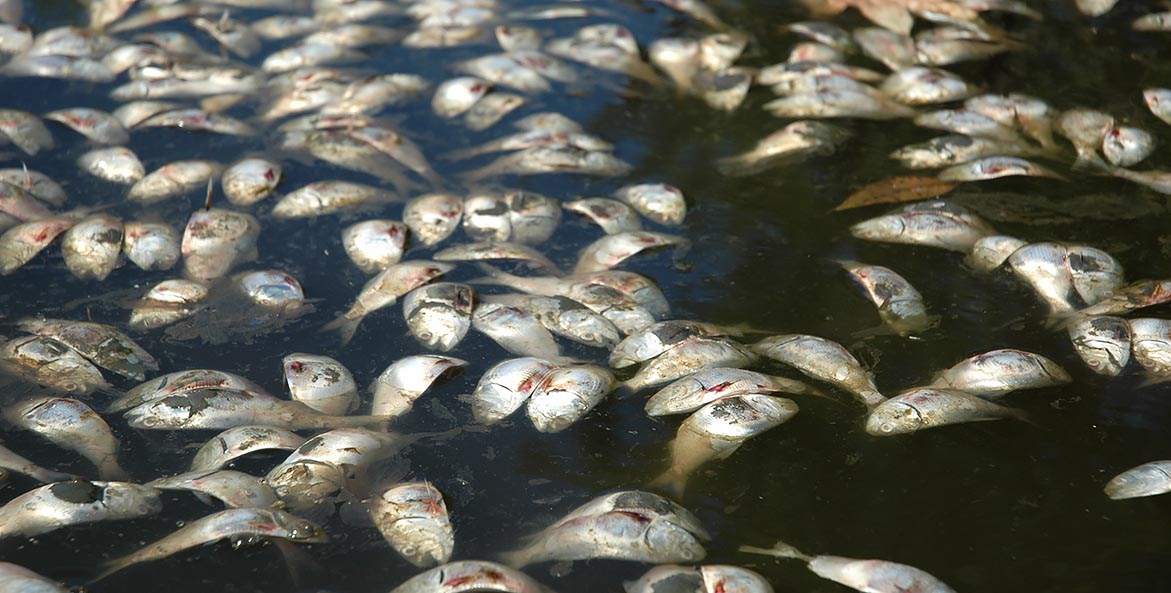Over the weekend, Tropical Storm Ophelia made landfall along the Mid-Atlantic Coast and prompted both Virginia and Maryland to declare states of emergency. It marked the 15th named storm of the Atlantic hurricane season—a season forecasters at the National Oceanic and Atmospheric Administration (NOAA) now predict will see above-average activity, driven in part by record-high sea surface temperatures in the Atlantic Ocean.
Globally, the oceans have absorbed 90 percent of the excess heat generated by human-caused climate change, and the rate of warming has doubled since 1993, according to the Intergovernmental Panel on Climate Change (IPCC). Scientists are still sorting out exactly how these changes will impact the long-term outlook for hurricanes, but in many other ways rising water temperatures are already making their mark on the Chesapeake Bay and rivers and streams across the watershed. Last month, CBF’s Maryland Senior Scientist Doug Myers joined Seth Coffman of Trout Unlimited to discuss the latest science and what hotter water means for restoration moving forward. Read on for some of the big takeaways and watch the full webinar below.
- Water temperatures are increasing in both tidal areas and streams, though not uniformly.
In April, the Chesapeake Bay Program’s Scientific and Technical Advisory Committee (STAC) released a report about rising water temperatures in the watershed and their implications for species and restoration efforts. It found that temperatures are rising in both the Bay itself and the watershed’s rivers and streams. These increases, however, are not uniform—they’re generally occurring more quickly in the southern portions of the watershed. Most of the warming is driven by increasing air temperatures, but different land uses can also affect warming rates, with temperatures generally rising more quickly in agricultural areas and less in forested areas. Runoff from paved urban areas can also create “thermal shocks” when it rains, rapidly raising stream temperatures as water washes off heated surfaces and into waterways. - Warmer water makes it harder to reduce low-oxygen dead zones.
One of the primary goals of Bay restoration is reducing the annual dead zone, where oxygen levels in the water are too low for most species to survive. The dead zone occurs when large algal blooms, fed by nitrogen and phosphorus pollution, die and decompose—a process that sucks oxygen from the water. Rising temperatures will make it harder to keep the dead zone in check for several reasons. For one, warmer water naturally holds less oxygen than colder water. It can also speed up the biological processes of algal growth and decomposition. Finally, rising temperatures can increase stratification, where warmer surface waters trap denser, colder water near the bottom and prevent oxygen from mixing throughout the water column. - Rising temperatures can compound other stressors for fish and habitats.
Warm water doesn’t affect all species equally. Several iconic, cold-water species—including brook trout and striped bass—may be particularly sensitive to rising temperatures. For example, brook trout habitat could become more fragmented as areas of hot water prevent them from moving through sections of streams. Striped bass may also feel the squeeze between hotter surface waters and colder, deeper waters that are more affected by low-oxygen dead zones. Even species that can tolerate warmer waters may feel indirect effects, such as changing relationships between predators and prey or changes in habitat—for example the potential loss of heat-sensitive eelgrass. - Some restoration techniques are “coolers” and others are “heaters.”
The good news is restoration and management efforts that are already underway to reduce nitrogen, phosphorus, and sediment pollution across the watershed can also help cool water temperatures and protect habitat for cold-water species. Some of these “cooling” practices, especially planting forested buffers along stream banks, can also provide multiple other benefits to species and water quality—as well as mitigate climate change by capturing and storing carbon. The STAC report found, however, that many management practices, such as stormwater retention ponds and stream projects that remove mature riparian trees, actually function as “heaters” that can raise stream temperatures. - Mitigation and adaptation are both needed.
To address rising temperatures across the watershed, actions are needed to both prevent additional warming and help species and habitats build resilience to the warming that is already occurring. That includes actions to mitigate climate change, such as reducing greenhouse gas emissions; pursuing restoration practices that capture and store carbon in trees, wetlands, and agricultural soils; and protecting the forests and wetlands that already exist. It also means improving stream and tidal habitats—and the connectivity between those habitats—and reducing stressors like pollution to give species the best possible chance to cope with rising temperatures.




